
Makeshift Metropolis: Ideas About Cities
by
Witold Rybczynski
Published 9 Nov 2010
M., 20, 38, 59, 63, 110 Stewart, Alexander Turney, 96 Stone Street (New York City), 128–29 Strawbridge & Clothier (Philadelphia), 97 Stuttgart, Germany, 46 Stuyvesant Town (New York City), 48–49 subdivisions, residential, 75 “suburban nation”, U.S. as, 165 Suburban Square (Ardmore, Pennsylvania), 97 suburbs: and cities Americans need, 182, 185–86, 187; and cities Americans want, 167, 197; and commuting between suburbs, 184; and decentralized cities, 75–76; and definition of cities, 166; density in, 152, 177, 185, 186; downtowns of, 177; garden, 85–87; and Garden City movement, 85, 86; Glazer’s views about, 57; growth of, 79, 165; and horizontal cities, 167; impact of recession on, 185; Jacobs’s views about, 88, 90; Le Corbusier’s views about, 68; malls in, 99, 100–101; middle class in, 54, 64; Mumford’s views about, 63; power centers in, 103; as preference of families with children, 91; shopping centers in, 93; town centers of, 185; Whyte’s views about, 54. See also Garden City movement; planned communities; specific community Sullivan, Louis, 20–21, 96 Sunbelt cities, 75, 79, 83 Sunnyside Gardens (Queens, New York), 38, 63–64 superhighways, 48 supermarkets, 103, 111 Supreme Court Building (Washington, D.C.), 84 SWMW (planner), 156 Sydney Opera House (Australia), 133–34 Tamburi, Orfeo, 54 Tampa, Florida, 170 taxes, 155, 178, 183, 185 technology, 67, 69, 71, 76, 96, 119, 157–58, 167, 168, 170–72, 186, 188–89 Tel Aviv, Israel, 195–96 theme parks, 171 30th Street Station (Philadelphia), 84 Thompson, Benjamin, 125 Three Big Ideas, 14 three-dimensional communities, 190 Time, Inc., 52, 53, 54 Toronto, Canada, 96, 113, 118 tourism, 122, 124, 134, 135, 158–59, 178, 184 towers in a park concept.
…
Unwin, the son of a Nonconformist Oxford tutor, was a follower of William Morris and a committed socialist. He and Parker were both early members of the Garden City Association and had already planned an industrial village when they won an architectural competition to design Letchworth. Like the City Beautiful architects, Unwin, who became the leading architect and planner of the Garden City movement, believed that beauty was an indispensable part of town planning. But, although he studied large cities such as Paris and Berlin, his model was not baroque Rome but rather the domestic architecture and haphazard plans of medieval towns and villages.27 Sir Ebenezer Howard, inventor of the Garden City.
…
Only forty years had passed since Le Corbusier unveiled “A Contemporary City of Three Million Inhabitants” at the Salon d’Automne. Nothing would appear less likely than that urban theories dreamed up in a Parisian garret would take hold in America, but that is exactly what happened. By the late 1950s, the City Beautiful and Garden City movements were a distant memory, the giants of that period either dead, such as Nolen and Atterbury, or retired, such as Olmsted Jr. Forest Hills Gardens was only a few decades old, but to the new generation of architects and planners it already seemed stodgy and old-fashioned, especially when compared to the exciting novelty of the Radiant City.
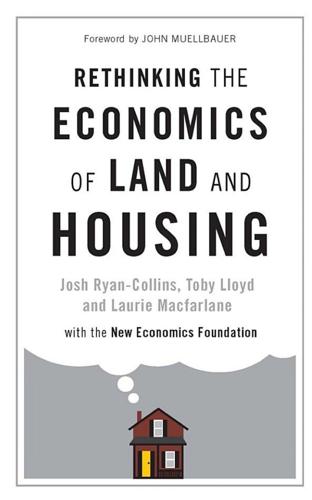
Rethinking the Economics of Land and Housing
by
Josh Ryan-Collins
,
Toby Lloyd
and
Laurie Macfarlane
Published 28 Feb 2017
During the turbulent decades that followed, governments and other actors would make repeated attempts to reform the land economy using the growing number of tools available to democratic, developed societies. Edwardian experiments One of the most prominent figures to emerge from this period was the stenographer Sir Ebenezer Howard, who founded the influential Garden City movement in the early twentieth century (see Box 4.1). Howard’s proposal was to use the community ownership of land to provide public benefits like decent housing and a healthy environment, in perpetuity. As such, the Garden City movement was as much about economic reform to address market failure as it was about design principles. Its model of holding land in perpetuity for the benefit of the community was an explicit attempt to solve the problem of rent by capturing economic rent for the community itself.
…
Later, other forms emerged, such as the tenant co-partnership model in 1904; co-ownership in the 1960s; shared ownership co-ops in the 1970s (Birchall, 2014); and Community Land Trusts today (see Chapter 7). Although the contribution of cooperative housing to the UK housing system has never been widely acknowledged, it has been influential among movements for urban reform, including the Garden City movement, which sought to combine new design principles with cooperative and mutual traditions (see Box 4.1) (Rowlands, 2009), and the housing association movement that has largely replaced local councils in providing social housing (see below). Finally, there is also a long, and often supressed, history of self-organising land use – from the common lands of the feudal era through to the ‘plotlands’ movement of working class self-builders that thrived up until the Second World War.
…
Addison Act (1919), 78 adverse selection, 127 affordable housing: capital grants, 34; housing investment bank proposal, 209–10; need for public investment, 222–3; planning permission conditionalities, 33, 93–6, 216; public corporations’ investment levels, 220–1; see also social housing age, and net property wealth, 181–2, 181 agricultural land, 9, 61, 68, 69, 122–3 agricultural tariffs, 43 agriculture: common agricultural policy, 33, 122–3; increase in productivity, 68 Alliance and Leicester, 139 Aquinas, Thomas, 16 Arkwright, Richard, 71 armed forces, demobilisation, 78, 79 Association of Residential Letting Agents (ARLA), 134 Assured Shorthold Tenancy, 89 Australia: house price to income ratio, 112, 114; land value taxes, 204–5; mortgage market structure, 156 Bank of England, 210 banks/banking: alternatives to bank debt financing, 211–12; business relationship banking, 208–9; credit and money creation, 115, 206–7; housing investment bank proposal, 209–10; incentives for non-property lending, 206–8; income from mortgage interest, 61; international regulation, 135; land as lending collateral, 7, 55, 127–8; land-related credit creation, 8, 114–19, 190–1, 222; lending by industry sector, 118–19, 118; lending relative to GDP, 117–18, 117; leverage, 184; macroprudential policy, 206; minimum deposit requirements (corset controls), 132, 155; money supply, 115; regulating property-related credit, 154–5; securitisation, 135–42, 156–7, 156; structural reform recommendations, 208–9; wholesale money markets, 131, 139 Basel Accord (Basel I), 135 basements, 57, 57n16 Bath, 71 Belgium, mortgage market structure, 156 Bradford and Bingley, 139 Bretton Woods system, 83 Brighton, 71 building societies: demutualisation, 134–5, 136; effect of mortgage funding deregulation, 132–3; emergence, 72, 128; favourable tax regime, 132; history, 129; interest rate cartel, 130, 132; mergers and acquisitions, 136; mortgage funding arrangements, 131; stability, 129–30, 132, 158 Building Societies Act (1986), 133 buy-to-let (BTL): increase, 7, 184; mortgages, 122, 134; overseas investors, 100, 160; tax relief, 62, 86, 160 Cadbury, George, 71 Canada, mortgage market structure, 156 capital: conflated with land, 48–52, 62; definition, 37–8; differences between land and capital, 51–7; differences between wealth and capital, 170–1; factor in production, 37–8 capital gains tax: for buy-to-let landlords, 62; definition, 85–6; exemption for primary residencies, 85–6, 104, 202 capital goods depreciation, 52–3 capital investment, 56 Capital Markets Union (CMU), 141 capitalism: Golden Age, 83; land as private property, 36; Primitive Accumulation concept, 18 Cerberus Capital Management, 136, 137 cholera, 70, 73 Churchill, Winston, 76–7, 189 Clark, John Bates, 48–51, 57–9 classical economics, 17, 38, 45, 48, 70 co-ownership housing, 72, 86 coal industry, 69 collateral: commercial real estate, 148; land as, 7, 20–1, 127–8, 160; see also home equity withdrawal collectivisation, 43 commercial real estate (CRE), 148–50; bank lending, 118–19, 118, 130, 148; credit bubbles and crises, 111, 148–9; data sets, 63; effect of UK vote to leave EU, 150; foreign investment, 149; investment returns, 148, 149–50; and Japanese crisis, 151–3; rating lists, 202; time-limited leases, 214 common agricultural policy, 33, 122–3 communications technology, 9 Community Land Trusts, 72, 198–9, 214, 221 commuting, 27 Competition, Credit and Control Act (1971), 130 compulsory purchase: ‘hope value’ court judgments, 88; housing construction, 80–1; infrastructure projects, 31, 73, 196–7, 222 conservation areas, 32 construction industry see housing construction industry consumption: affected by house deposit saving, 145; and asset-based wealth, 123–4; consumption-to-income ratio trends, 143–4, 144; equity release and consumer demand, 145–7, 146; and house prices, 147; and inequality, 185–7 cooperative housing, 72, 215 Corn Laws, 43, 69–70 corporate income tax, 168–9 council tax, 104, 201, 202 credit conditions index, 143–4, 144 credit controls, 132 credit liberalisation, 144 Crown Estate, 19, 31 Darrow, Charles, 47 de Soto, Hernando, 21 debt, public sector debt, 219–21 debt-to-income ratio, 115–16, 116, 139, 159, 186 defaults, mortgage lending, 141 deindustrialisation, 168 Denmark: land value taxes, 204; size of new-builds, 97 developing economies, and private property, 21–2 development charge, 82 digital economy, 9 Eastern Europe, serfdom, 23–4 Eccles, Marriner, 186–7 economic growth: dependence on land values, 190–1; and homeownership, 21–2 economic modelling, 50–1, 155, 218 economic rent: Crown Estate, 31; determined by collective rather than individual investment, 40; financial sector, 44, 184; infrastructure projects, 194–5, 196–7; and land, 39–44, 56–7; and land taxes, 34–5, 45–8, 76–7, 199, 222; and landownership, 10–13, 25; oil sector, 44; urban areas, 41–2, 73–4 economic theory: landownership, 16–18; marginal productivity theory, 49–50, 51, 56, 57–9, 165–7; shortcomings, 64–5, 191–2, 217; teaching reform proposals, 218 Edinburgh New Town, 66, 71, 80 eminent domain theory, 16 Enlightenment, 16 equity release see home equity withdrawal European Investment Bank, 210 European Union: Capital Markets Union (CMU), 141; common agricultural policy, 33, 122–3; full-recourse mortgage loans, 141–2; government debt, 220; UK decision to leave, 150, 160 Eurostat, 64, 219 factory workers, accommodation, 71 feudal system, 18, 19, 32 financial crisis (2007-8): causes, 153–4, 159–60, 186–7; effect on mortgages, 100; and house and land prices, 101, 140; Northern Rock, 136–7; payment defaults, 123; UK banking collapse, 139–40 financial instability, 152–3, 154–5, 185–7 Financial Policy Committee, 155, 206 financial sector: economic rent, 44, 184; profitability, 184; reform proposals, 205–12; see also banks/banking financialisation, 120; declining wage share in national income, 169; land, 14, 110–12; land and property, 160 First World War, 77 Fisher, Irving, 152 Florida, credit-driven bubbles, 111 foreign exchange controls, 132 France: feudal system, 32; Livrét A accounts, 210; mortgage market structure, 156; private tenancy, 32; residential property wealth, 9, 10 French Physiocrats, 38 Friedman, Milton, 87 Garden City movement, 72, 75–6 GDP: and bank lending by sector, 118–19, 118; and declining wage share, 169; and domestic mortgage lending, 118, 156–8, 156; and home equity withdrawal, 146; and household debt, 151; and outstanding credit loans, 117; and property wealth, 9–10, 10 George, Henry, 12, 25, 34, 45, 58, 60–1, 76, 87, 199; Progress and Poverty, 40–1, 46–7 Germany: business relationship banking, 208–9; credit controls, 207; economic success and low homeownership, 215; house price to income ratio, 112, 114; mortgage market structure and homeownership, 156, 157–8; private tenancy, 32 Gini coefficient, 163, 177, 178 globalisation, 167–8, 169 Great Depression, 186–7 Great Moderation, 154, 191 Grotius, Hugo, 16 Halifax Bank of Scotland (HBOS), 139 health problems, and inequality, 185 help-to-buy schemes, 122 Henry VIII, King, 20 high-rise buildings, 57 Hill, Octavia, 71 home equity withdrawal: contribution to consumer demand, 145–7, 146; and financial crisis, 187; and living standards, 180; and mortgage market structure, 156–7, 156; to finance consumer goods, 127, 133 homeownership: benefits, 101; difficulties in saving for, rent trap, 106; downward trend, 83, 103, 178; as financial asset, 63; housing costs, 179; increased unemployment and reduced labour mobility, 27–8, 215; interwar growth, 78; investment opportunity, 92; low-supply equilibrium, 102; and mortgage market structure, 156–8, 156; mutual co-ownership, 86; political and electoral dominance, 24–5, 92; Right to Buy policy, 89, 90–1, 103; rise in 1970s/80s, 86; second homes, 160; trends, 106–7, 107 Hong Kong, Mass Transit Railway, 195 house building see housing construction industry house prices: boom and bust, 88, 99; and consumer demand, 147; and credit availability, 116–18; financial crisis collapse, 140; and growing inequality, 177–8; house price-credit feedback cycle, 119–24; increase with buy-to-let mortgages, 134; low-supply equilibrium, 102; negative equity, 123, 133–4; price-to-income ratios, 99, 100, 112–14, 114, 139, 183, 183; and real disposable income, 115–16, 116; replacement cost vs market price, 6; rise due to insufficient supply, 63; volatility, 8, 8, 112–14, 114; volatility reduced by land taxes, 200 Housing Act (1924), 78 Housing Act (1980), 89 Housing Act (1988), 89 housing associations, 72, 82, 83, 93 housing benefit, 34, 96, 106 housing construction industry: barriers to entry, 97; building clubs, 72; compulsory land purchase, 80–1; concentration, 96–7; costs, 8, 95; development charge, 82; effect of financial crisis, 101; land banks (with planning permission), 96–7, 101; peak, 82; poor design quality, 97; private house building, 78; size trends, 97; speculative house building, 93, 94–5, 96; trends, 82–5, 82, 83 housing costs: by tenure type, 179; and inequality, 179–80 housing demand, 63, 114 Housing, Town Planning, &c.
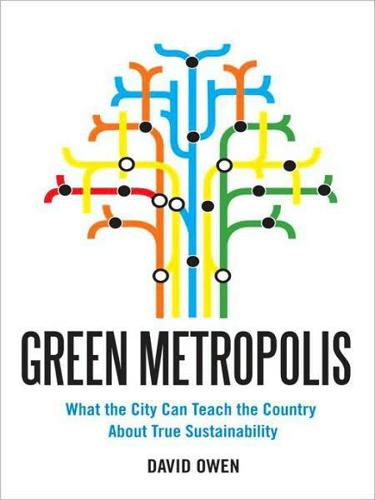
Green Metropolis: Why Living Smaller, Living Closer, and Driving Less Are Thekeys to Sustainability
by
David Owen
Published 16 Sep 2009
In 1847, a Scottish visitor to England concisely summarized the dark side of that country’s industrial progress, when he described the Irwell River as it flowed out of Manchester: “There are myriads of dirty things given it to wash, and whole waggon-loads of poisons from dye-houses and bleach-yards thrown into it to carry away; steam-boilers discharge into it their seething contents, and drains and sewers their fetid impurities; till at length it rolls on—here between tall dingy walls, there under precipices of red sandstone—considerably less a river than a flood of liquid manure, in which all life dies, whether animal or vegetable, and which resembles nothing in nature, except, perhaps, the stream thrown out in eruption by some mud-volcano.” 29 The proposed solution was to reverse the direction of human migration—in effect, to create sprawl. In 1898, Ebenezer Howard, a British urban planner and the originator of the open-space-oriented development scheme known as the garden city movement, wrote, “It is wellnigh universally agreed by men of all parties, not only in England, but all over Europe and America and our colonies, that it is deeply to be deplored that people should continue to stream into the already over-crowded cities, and should thus further deplete the country districts.”
…
See carbon emissions; specific issues Environmental Design & Construction environmental movement anti-city bias distributed electricity generation scheme Kyoto Protocol locavorism misguided focus opposition to large-scale initiatives product marketing rationalization of wasteful practices recycling emphasis scientific proposals Sierra Club sustainability concept EROEI (energy returned on energy invested) ethanol Europe economic collapse energy efficiency of old cities garden city movement industrialization shared-space traffic calming exurban areas. See suburbs and nonurban areas “Facing the Freshwater Crisis” (Rogers) Farr, Douglas Farrar, Frederic William Fast Company Feigon, Sharon “Fenestration Heat Loss Facts” (National Fenestration Rating Council) Fenichell, Stephen financial issues.
…
See also coal; natural gas; oil as basis of modern life carbon-based alternatives to oil economic viability of low-grade fuels from as multipliers of human labor origin of 4 Times Square (Condé Nast Building) Fowle, Bruce Frank, Lawrence Freakonomics (Levitt and Dubner) Friedman, Thomas L. fuel-cell technology and hydrogen power Gap Inc. building garden city movement gasoline cheapness of consumption rates prices, emotional responses to prices, public transit usage and taxes General Motors Germany Girardet, Herbert Gissen, David Giuliani, Rudolph glass, in building construction Gnaizda, Robert Goodstein, David Gordon Strong Automobile Objective Great Pacific Garbage Patch green architecture.
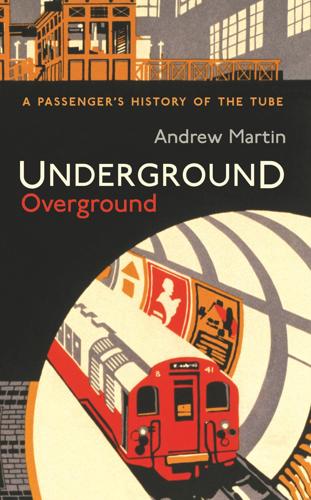
Underground, Overground
by
Andrew Martin
Published 13 Nov 2012
Metroland was a ‘verdant realm’ set on ‘gentle, flower-decked downs’; houses were ‘homesteads’ (and they were set on ‘estates’, at least until the London County Council began to build its own ‘estates’ for London’s poor, thus giving the word a downmarket association). The houses in the booklets were shown with large gardens, demonstrating the influence of the turn-of-the-century Garden City Movement. The railway, with its ‘fast and luxurious electric trains’, was somewhere distant on the horizon, whereas the vibrations of the trains had cracked Mr Pooter’s garden wall in his earlier, more central suburb of Holloway. Actually, most of the Metroland houses were cheap semis, costing about £400 (£20,000 in today’s money), but they offered a new way of living: owner occupation.
…
She counteracted the development of Golders Green by raising funds to buy 80 acres of land to the east of the proposed station, and here the Hampstead Heath Extension was created. On a further 250 acres of land she founded Hampstead Garden Suburb, the rationale being that if the countryside of north London were to be developed, then it would be developed in the right way. ‘The Suburb’, as it is known to its residents, was a spin-off from the Garden City movement. It was meant to provide homes for all classes – a vision most emphatically not fulfilled, as anyone who tried to open, say, a pub within its boundaries would quickly discover. The Arts and Crafts houses, divided by hedges and not walls, are populated exclusively by the upper middle classes.
…
Hamilton 104 Embankment District Line 61 Northern Line xii, 133, 178–9, 220, 221 see also Charing Cross Engel, Matthew 15 England’s Hour (Brittain) 232–3 English Heritage 92 Epping 76, 201, 209 Epping-Ongar shuttle 150, 208–10 Epstein, Jacob 188–9 escalators xiv–xv, 142, 217–19, 246, 261 Essex Road 122 Euston (railway station) 13, 23 Euston (Underground station) Northern Line 108, 177, 220, 236–7 Victoria Line 236–7 Euston Road (station) see Warren Street Euston Road (street) 1–2, 17, 42 see also New Road Euston Square 36 Evening Standard xv, 238 Extension Railway, The 51, 52 F Fairlop 208, 256 Fares Fair 243–4, 245 Farringdon Crossrail 255 Fleet pipe 29, 30 Metropolitan Railway 1, 10, 22, 26, 34–5, 52 Farringdon Road 21 Feltz, Vanessa 177 Fenchurch Street 13 Fennell Report 246 Finchley Central 202, 203 Finchley Road 5, 51, 75, 173 Finsbury Park Aldwych Shuttle 151–2 Big Tube 121, 122, 123–4, 125 Great Northern 182 Great Northern & Strand Railway 122, 130, 150 LNER line 205, 206 Piccadilly Line 5, 122, 123–4, 144 Victoria Line 5, 123–4, 234 fire 246 First Capital Connect 125, 183 First World War 152, 224 Fitzroy, Caroline 83 fleas 228 Fleet River 29–31 Fleet Valley 21, 27 Forbes, James Staats 56, 62, 64 Ford, Ford Madox 135 four-rail electrification 103, 135–6 Fowler, John 31, 42 Fowler’s Ghost 42 Franch, John 126, 143 Freud, Bella 259 Frosterus, Sigurd 111 Fulham 80–1 Fulham Railway Bridge 81 G Gallop, Alan 60 Gants Hill xii–xiii, 207–8 Garden City Movement 169, 176 gardens Chesham 77 Edgware Road 69–70 Garfield, Simon 160 Garland, Ken 200, 201, 203 gas lights 37–8 gatemen 147, 210 gauge 33 Gawley, Marc 268 Gentle Gunman, The 153 ghost stations 263–4 ghosts 261, 263 Gibb, Sir George 148, 149–50, 156 Gibson Square 237 Gill, Eric 188 Gillespie Road see Arsenal Ginger, Lee 204 Gissing, George 40 Gladstone, Mrs 31 Gladstone, William 31, 33, 34 Glasgow 2 Gloucester Road 57, 62 gnomes 69–70 Golders Green 133, 144, 148, 175–7, 178, 179 Gooch, Sir Daniel 42 Goodge Street 147, 230 Gower Street 36 see also Euston Square Grand Central Hotel 75, 78 Graves, Charles 226 Great Central Railway 75 Great Eastern Railway 13, 47, 90, 256 Great Northern & City Railway 105, 120–5, 130, 158, 159, 182, 191, 206 Great Northern & Strand Railway 122, 130, 133, 150 Great Northern Piccadilly and Brompton Railway (GNP & B) 130, 150–1 see also Brompton & Piccadilly Circus Railway; Piccadilly Line Great Northern Railway 25, 42, 75, 158 Big Tube 121–2, 123, 130 Edgware 178 Finsbury Park 121, 122, 150, 182 and Metropolitan Railway 26, 52, 56 Great Portland Street 36 Great Western Railway 14, 26, 33, 42, 43, 49, 207 Greater London Authority 251–2 Greater London Council (GLC) 166, 241, 242, 243–4 abolition 245 creation 239 Jubilee Line 240 see also London County Council Greathead, James Henry 95, 98, 100, 115, 116, 121, 141 tunnelling shield 95, 99, 115 Green, Hughie 172 Green, Leslie 6, 145–7 Green, Oliver 187, 208 Green Belt 8, 149, 206, 209, 221–2 Green Belt (London and Home Counties) Act 1938 222 Green Park 231, 247 Grigsby, Emilie Busbey 128 Grossmith, George and Weedon 167 Grosvenor Gallery Power Station 83, 84 guards xiv, 210–11 Gunnersbury 80 H Hackney 274 hackney carriages 18 Hainault 208 Hale, George Ellery 142 Halliday, Stephen 132, 142, 156, 169, 224, 261 Hammersmith 50 Circle Line 68 District Line 79 Piccadilly Line 133, 144, 182 Hammersmith & City Line 28, 49–50, 79 Baker Street 37 and Circle Line 68 Edgware Road 68 Paddington 37 Wood Lane and White City 119, 120 Hammersmith & City Railway 49 Hampstead 148, 178 Hampstead Garden Suburb 176, 177 Hampstead Heath 129, 133, 176 Hampstead Road 264–5 Hampstead Tube see Charing Cross, Euston & Hampstead Railway Hancock, Tony 257 Hardy, Brian 220 Hardy, Thomas 55 Harris, Bumper 217, 261 Harrods 82, 83 Harrow 72 Harrow & Wealdstone 168 Hassall, John 161–2 Hay, William Delisle 97 Heap, D. 11 Heart of London, The (Dickens) 242 Heathrow 184, 274 Hendon 179 Henry VIII Hotel 58 Hertford 183 Hibbert, Christopher 82 High Barnet 9, 205, 206 High Holborn 114 ‘High Road’ (Betjeman) 174 High Street Kensington 57, 62 High Wages (Whipple) 1, 2 Highbury 235 Highbury & Islington 120, 122 Highgate xii, 144, 147, 148, 205, 206 see also Archway History of London Transport, A (Barker and Robbins) 20–1, 85, 101, 127, 128, 132 Holborn 150, 151, 152, 263 Holborn Viaduct 21, 55, 56 Holden, Charles 184, 186, 247, 255 55 Broadway 188–9 Arnos Grove 183, 184 Central Line stations 207 Northern Line stations 179, 186–7 Piccadilly Circus 187–8 Piccadilly Line stations 189–90 Hole in the Wall, The 39 Holland Park 116 Holloway Road 130 Holmes, Sherlock 38, 63, 75, 247 Hopkins, Anthony 259 Hornbys 33 Horne, M.
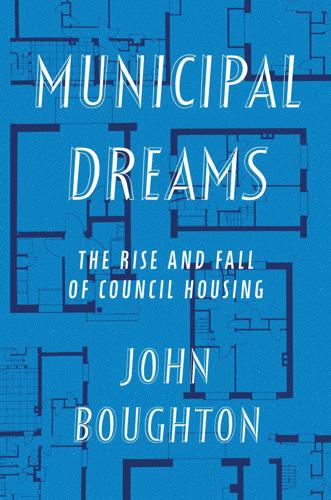
Municipal Dreams: The Rise and Fall of Council Housing
by
John Boughton
Published 14 May 2018
There were criticisms too, as we’ll see, of the first wave of New Towns that emerged in the later 1940s. For the supporters of Ebenezer Howard’s Garden City movement (Howard himself had died in 1928), these mattered little. F.J. Osborn – indefatigable leader of the Town and County Planning Association and Howard’s anointed successor – had been the leading advocate of New Towns in the interwar period. But it was harsh economic realities rather than the bucolic idealism of the Garden City movement that played the decisive role in the creation of the post-war programme of New Towns. The 1940 Report of the Barlow Commission on Distribution of Industrial Population, convened in the divided Britain of the Great Depression, criticised the growing size and commercial dominance of London.
…
Death rates from respiratory disease were three times and the infant death rate twice the London average. That the housing should be cleared was not in doubt: it had been condemned thirty years earlier. The issue was what might replace it. The new Labour council proposed what its architect, Ewart G. Culpin, a leader of the Garden City movement, described as a small estate of ‘trim structures of warm, red brick’, housing only 400. The Conservative (Municipal Reform) majority on the LCC and the neighbouring boroughs baulked. Where would the unhoused 900 residents go? Their fears that many of the displaced might move to adjacent areas and add to existing problems of overcrowding were backed by the Ministry of Health, which refused loan support.
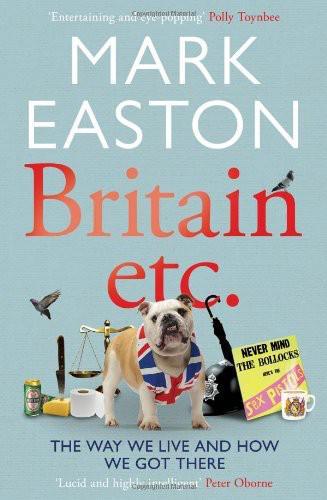
Britain Etc
by
Mark Easton
Published 1 Mar 2012
The invention of the mower had seen the lawn escape over the high hedges of England’s great estates and into the gardens of a million humble suburban homes. Urban planners had become convinced of the need for green spaces and municipal authorities vied to recruit the finest lawn-makers for their locality. The last decade of the nineteenth century saw a thousand acres of town gardens and ornamental grounds open in London alone. The Garden City movement of Ebenezer Howard revisited some of Loudon’s ideas, creating new towns built around concentric circles of green. The National Trust was born, with a mission to protect ‘the public interest in open spaces’. The trust would go on to care for more than 600,000 acres of land ‘for the benefit of the nation’.
…
Richard, ref1 French Connection, ref1 Freud, Sigmund, ref1 Friends, ref1 Fruit and Vegetable Taskforce (2011), ref1 fruit, fresh, see vegetables ‘The F*** Shop’ (2 Live Crew), ref1 Fundamental Principles of Official Statistics (UN), ref1 Furnham, Prof. Adrian, ref1 Fyfe, David Maxwell, ref1, ref2 Gaelic League, ref1 Gainsborough, 5th Earl of, ref1 Galleries shopping centre, ref1 Galton, Sir Francis, ref1 Game Act (1671), ref1, ref2 Game Reform Act (1831), ref1 Garden City movement, ref1 Gardner, Randy, ref1 Gateway 2000, ref1 Geddes, Sir Patrick, ref1 G8, ref1 General Elections: 1900, ref1 1951, ref1 1964, ref1 1970, ref1 1997, ref1, ref2, ref3 2001, ref1 2005, ref1 2010, ref1, ref2, ref3, ref4, ref5 A General Theory of Crime (Gottfredson, Hirschi), ref1 generation gap, ref1 see also young people George II, ref1 George VI, ref1 Georgia, drinking culture in, ref1 Gerbeau, Pierre-Yves (‘PY’), ref1 ‘Get The F*** Out Of My House (Bitch)’ (2 Live Crew), ref1 ghetto language, ref1 Giddens, Anthony, ref1, ref2, ref3 Gilligan, James, ref1, ref2 Girdlestone, Revd Charles, ref1 Gladstone, William, ref1 global communication, ref1 see also Internet; media; television global financial crisis, ref1, ref2 globalisation, ref1, ref2, ref3, ref4, ref5, ref6 WWW powers new period of, ref1 beginnings of, ref1 ‘glocalization’, ref1 glue sniffing, ref1 goats’ cheese, ref1 ‘God Save The Queen’, ref1 Godric, St, ref1 Godwin, George, ref1 Golden Age of Nutrition, ref1 Golinski, Jan, ref1 ‘Good Childhood’, ref1 Goons, The, ref1 Gorau Glas, ref1 Gordon, David, ref1, ref2 Goring, Charles, ref1 Gottfredson, Michael, ref1 Gowing, Nik, ref1 Grant, Hugh, ref1 grass, ref1 passim country fanatical about, ref1 as open spaces, see public open space shopping mall appropriates, ref1 state of, in public open spaces, ref1 urban planners convinced of need for, ref1 Great Depression, ref1 Great Eastern, SS, ref1 Great Exhibition (1851), ref1 Great House of Easement, ref1 Great North Vote, ref1 Great Public Demonstration (1902), ref1 Greece, ref1 ancient, ref1 Green Belt, ref1 Greene, Sir Hugh, ref1 Greer, Germaine, ref1 Gross Domestic Product (GDP), ref1, ref2 Group Lafon, ref1 Grundy, Bill, ref1 Guardian, ref1, ref2 Guildford Four, ref1 Gulf War, first, ref1 Gurría, Angel, ref1 guttersludge, ref1 Hackney carriages, ref1 Hadrian’s Wall, ref1 Hailsham, Viscount, ref1 Halcyon, ref1 Hall, G.
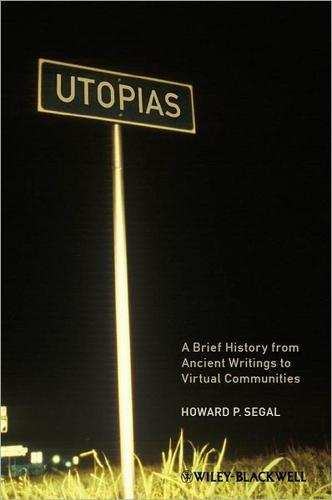
Utopias: A Brief History From Ancient Writings to Virtual Communities
by
Howard P. Segal
Published 20 May 2012
Outside the United States and Europe, utopian communities persist, as they have for centuries—as with, for instance, Buddhist monasteries and their Hindu equivalents in China, India, Japan, and Southeast Asia. There are also various secular utopian communities in these nations and regions, such as those influenced in Japan by both Robert Owen and the Garden City movement. Some of these Asian communities have also sprung up in the West and have often been characterized, whether positively or negatively, as cults—most famously the Hare Krishnas, officially known as the International Society for Krishna Consciousness. Their dancing and chanting in colorful garb in cities have become familiar sights.18 Israeli Kibbutzim Paradoxically, high tech has at once helped to save and helped to undermine the small Israeli communal societies called the kibbutzim.
…
Buckminster 14, 245–249 influence 195–196, 207 and “limits of growth” 237–238 sense of social responsibility 163 as visionary 162 Fuller Archives 245–246 see also Utopia or Oblivion Fulton, Robert 142 Funding for science and technology 121–122 Future and its Enemies, The (Postrel) 164 “Future of Land Grant Universities, The” 207 future of print 217–222 online readerships 219 Future Shock (Toffler) 118, 163–164, 236 Galbraith, John Kenneth 12, 101, 109, 122, 161 Gandhi, Mohandas (Mahatma) 173 Garden City movement 196 Garden of Eden 47, 243 Gates, Bill 157–158, 161, 163, 186, 201 philanthropy 247 Gates, Melinda 163 Geddes, Norman Bel 34, 35 geeks, image of 201 General Electric 167 genetic engineering 121, 124, 159, 187 genetic modification of animals 125–126 genetic testing 126 Genius of American Politics, The (Boorstin) 101 geodesic dome 195–196, 246–247 George Lucas Educational Foundation 204–205 George, Henry 82 German Ideology The (Marx/ Engels) 66–67 Germany 38, 79 Nazi Germany 104, 244 and nuclear power 152 Gernsback, Hugo 9 Ghost Busters 202 Gilbert, Daniel 124–125 Gillette, King Camp 90 Gilman, Charlotte Perkins 92 Gimpel, Jean 236–237 Gingrich, Newt 118, 189 Giving Up the Gun: Japan’s Reversion to the Sword, 1543–1879 (Perrin) 234–235 global citizenship, visions of 252, 253 God is Back (Micklethwait and Wooldridge) 11 Golden Gate International Exposition, San Francisco 34 Google 158, 193, 205 Gore, Vice-President Al 119, 189 Great Delusion, The (Stoll) 79 Great Depression, 1930s 9, 83, 96, 102, 109 Great Famine, China 19 Great Society 159 Index 275 Greater East Asian Japanese colonialist movement 21 “Green Globe, The” 242 Griffith, Mary 78, 81, 90, 91 Guernica 35, 252 Gulliver’s Travels (Swift) 200 Gutenberg, Johann 190 Hammersley, Ben 218 Hardwicke, Cedric 240, 241 Hare Krishnas (International Society for Krishna Consciousness) 196 Harrington, Michael 101 Hawai’i Research Center for Futures Studies 250 Hawking, Professor Stephen 202 Hawthorne, Nathaniel 25, 130 Heaven: Our Enduring Fascination with the Afterlife (Miller) 12 Heinlein, Robert 9 Hemingway, Ernest 90 Henry VIII, King 48 Herf, Jeffrey 104 Herland (Gilman) 92 Hesiod 47 Hewlett, William 158 Hewlett-Packard 158, 192 higher education–military research nexus 115 Higher Learning in America, The (Veblen) 216 high-tech: advances 2 and cyberspace 192, 253, 255 and education 203, 209, 211–213, 214 India 172 industry 110,121,158,163,198 Kellogg Commission and 211–213, 214, 215, 216–217 and military 238 negative aspects 121, 217, 243 276 Index research 115, 121 and techno-fixes 211 and techno-mania 187 utopias and utopianism 1, 16, 159, 162, 163, 164, 165–168, 186, 207–208 zealots and 188–189 see also cyberspace Hilton, James 13 Hinduism 171 hippies at Golden Gate Park 248 history: nature of 19, 51 distortion of 84 persistence of 163–164 prophets’ ignoring of 163, 166, 188–193 Hitler, Adolf 243, 244 Ho Chi Minh trail 105 Ho, Koon-ki 17 Homeland Security Science and Technology Stakeholders 253–254 Honey, I Blew Up the Kid 202 Honey, I Shrunk the Kids 202 Hoover, President Herbert 88, 102, 110 Horace 47–48 Howe, Irving 253 Hubble space telescope 121 human behavior 123, 125 Human Genome Project 124 human rights 23, 39 suppression of 168 utopias and 253 human satisfaction 240 Huxley, Aldous 123, 164, 166 Huxley, T.
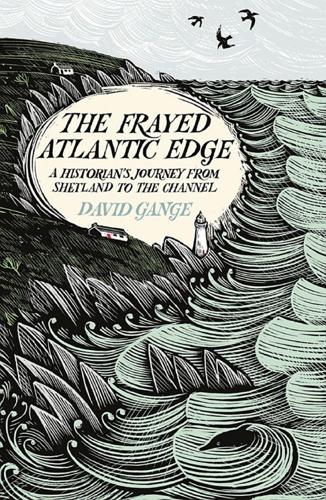
The Frayed Atlantic Edge: A Historian’s Journey From Shetland to the Channel
by
David Gange
Published 10 Jul 2019
So was the trend for literary figures to seek a simple life on Peak District or Cotswold smallholdings or in writing huts on the edge of their allotment. New societies, from the National Trust to the National Footpath Preservation Society, institutionalised the invention of the countryside. The garden-cities movement aimed ‘to wipe the ugly nineteenth century from the slate’ and show that the Industrial Revolution had been a bad dream from which Britain could awake. In their rejection of the present, journalists flooded west to find a past and future utopia. Many of the flurry of Enlli articles that resulted are glorious in their vividness but horrifying in a chatty condescension that was amplified with every mile urbane travellers moved from the leather armchairs of their wood-panelled clubs.
…
B., 190 Dubh, Torquil, 135 Dubh Artach lighthouse, 198 Dublin Society for Improving Husbandry, Manufacturing and Other Useful Arts and Sciences, 238–9 Dún Aonghasa (clifftop fort), 261–2, 263 Dùn Èistean (Ness port), 99, 100 Dungloe (County Donegal), 208, 229 dunlins, 254 Dunnett, Alastair, 191–7, 345 Dursey Island cliffs, 287 eagles, 7, 10, 110, 135, 167, 188 Easdale, island of, 190 East Burra, island of, 27 Eddrachillis Bay (islet, the Brieve’s Island), 136 Edinburgh, 103, 106, 124, 141, 149, 201 Education Acts (1870, 1872), x, 102–3, 341 Edwardes, Charles, 299–301, 304 eels, 41, 168, 236 Egilsay (holy island of Orkney), 77 Egyptian Hall in Piccadilly, 62 eider ducks, 71, 116 Eliot, T.S., Four Quartets (1943), 321 Enlightenment: agricultural sciences, 111; effort to make science universal, 257–8; elite domination of narrative, 190; ‘Highland problem’ as invention of, 344; impact on coastal communities, x; monetary economy and wage labour, 217, 218; need for eradication of label, 190, 340–1; rereading in light of island stories, 189, 190–5, 217–18, 257–8, 340–1 Enterprise Energy, 248 environmentalism: and Rachel Carson, 18, 345; ‘Counter-Desecration Phrasebook’ concept, 113–14, 115, 134; early history of British conservation, 158, 159–60; and Gaelic culture, 113–15; and Gaelic language, 113–14; intense awareness of present degradation, 115; Machair Life project on Uist, 112; modernity as ecological threat, 341, 343; new ways of living well, 9–10; protests against Shell, 249–50, 251–2; the whale as symbol of, 275–6 Eòrapaidh (chapel on Ness), 99 Eriskay, island of, 103 European Commission, 295 Evans, Christine, 305, 306–10, 317, 347 Evans, Colin, 305, 306 Evans, Ernest, 304, 305–6, 308–9 Evans, Estyn, 216–17 Eynhallow (holy island of Orkney), 77, 79, 81 Fair Isle, 27, 45, 50 Falkirk, 151 Fanad Head lighthouse, 198, 204 Farley, Erin, 201–2 farming: ‘agricultural revolution’ label, 340; cattle-droving routes, 149, 150–2; eagles seen as threat to, 10; ‘Glendale martyrs’ on Skye, 177; ‘Highland problem’ as Enlightenment invention, 344; and historic landscape, 79; in Ireland, 214, 216–17, 218, 219–20, 227; lazy-beds (feannagan), 110–11, 190; Machair Life project on Uist, 112; nineteenth-century ‘improvements’, 95, 111–12, 151–3, 195–6, 344; in north-west Scotland wilderness, 155–6; on Orkney, 66, 72, 76–7; peatland, 26, 67, 79, 93, 95, 117, 168, 220–1, 252, 255; potato blight of 1840s, 111, 210, 214, 228–9; of potatoes, 111, 210, 218; on Shetland, 43, 47; shieling customs, 94–5; small-scale crofting on Uist, 111–12, 115; twentieth-century focus on the present, 112; in Wales, 297, 311; on Western Isles, 94–5, 96, 111–13, 116–17, 119–20 Faroe, 20, 25, 54, 211 fascism, 177, 178 Fastnet Rock, 277, 284; lighthouse, 198 feldspar, 33 feminist historiography of geography, 282 Fiddler, Meg, 72 Fidelis (Irish monk), 284–5 field sports, 10, 152–3, 154–5 film, 10–12, 264–5, 281–2 Finlay, Ian Hamilton, 86–7 Fir Bolgs (mythological Irish race), 213, 261–2 First World War, 101, 138, 341–2 Fisherfield, 145, 153, 156 fishing: in Cornwall, 322, 323, 324; as dangerous industry, 235; eagles seen as threat to, 10; and European institutions, 264; in Ireland, 221–2, 230–1, 235, 247, 252, 256, 264–5; Irish boats, 208–9; Irish Fishers’ Knowledge Project, 264–5; modern factory of the sea, 11, 31, 101, 264; and North Sea, 11; on Orkney, 67–8; Outer Hebrides, 98, 101–2; on Shetland, 27–31, 47 Fivepenny (township on Ness), 99 Fladda lighthouse, 198, 199–201 Flaws, Andy, 202 Foinaven (Foinne Bheinn) (mountain), 2, 125, 134 folklore, 10; of the Armada, xi, 74–5; of Atlantic seals, 246; and Cornwall, 322–3; of Eynhallow, 81; and Ness group, 106–7; of Orkney, 79–80, 81; storytelling on Westray, 74–5; of Thoraí, 219; and transhumance customs, 94–5 Fomorians (mythological Irish race), 213 Forestry Commission, 160 Foula, island of, 38, 45, 55 Foulis, Will, 62 foxes, 125 Foze Rocks, 277 Fraser Darling, Frank, 8, 123 fulmars, 17, 22, 38, 46, 47, 55, 81, 98, 215, 227 gabbro, 33, 176, 179, 181 Gabhla, island of, 227 Gaelic culture: centralising onslaught against, 99–100, 114, 189–95, 215–19, 297, 341, 344–5; and communications revolution, 9–10, 109; and Cromwell, 211, 255, 287; devastation of on Mull, 187–8, 194–5; dinnseanchas (‘place-lore’), 256–8, 261, 263; divergence from Lowland Scotland (after 1840), 100–1; Dunnett and Adam campaign, 191–7, 345; engrained romantic imagery, 12; and environmentalism, 113–15; Galway city as haven of, 268; impact of Jacobite defeat, 129; Irish Gaeltacht, 209–11, 223, 246, 247, 255, 268; and Norman MacCaig, 12, 121, 124, 137–40, 142, 170; and Sorley MacLean, 165, 176–8, 187; MacLean’s view of as socialistic, 177–8; and narratives of failure, 102, 103–4, 106–7; oral history tradition, 99, 106, 112, 127, 130–3; politics on Skye, 176–8; rejuvenation of, x, 10, 91, 104–9, 112–15, 141–2; relationship of land with sea, 93–4, 107–9, 172, 209–12; Scottish Gàdhealtachd, 99, 100, 106, 110, 145, 177; seafaring epics, 171, 172, 173–4; and Skye, 165, 176–8; song and poem as history, 127–8, 130–3; stereotyping/mythologising of coastal communities, 11–12; symbolic ships, 172; as tied to place, 134; urban Gaelic renaissance, 141–2; as victim of modern farming methods, 111–12; as victim of nationalised education, 102–4, 106–7, 108, 109–10 Gaelic language, 4; activism promoting, 104, 133–4; and collapse of maritime trades, 246; in Connacht’s ABC zone, 255, 268; current state of, 110, 209; decline of, 102–3, 141; and Rob Donn, 130; and emigration, 102; environmental concepts, 113–14; Gaelic patronymics on Ness, 107; industrial modernity’s crusade against, 102–4, 341; Irish origins, 207–8; and lighthouse keeping, 204; and Norman MacCaig, 124, 139, 141; name ‘Argyll’, 208; place names on Havera, 45; propaganda against, 103–4, 341; rejuvenation of, 10, 91, 207–8; relative strength of Irish Gaelic, 210–11, 268; verse, 12, 94, 123–4, 126, 127–8, 129–34, 136, 165, 171–4, 176–8, 344; versifier’s function, 127–8; as victim of nationalised education, 102–4, 106–7, 108, 109–10; in Western Isles, 72, 91, 93, 99, 100, 102, 104–5, 107–10 Galician culture, 10, 283, 295 Gallagher, Sally and Paddy, 229 Galway, County (province of Connacht): ‘ABC of earth wonders’, 255–7; Connemara, 85, 210, 211–12, 223, 254–5, 256–61, 266–8; mapping of, 254–5, 256–8, 261; Slyne Head, 266–8 Galway Bay, 254–60 Galway city, 260, 268, 271 gannets, 20–2, 23, 31–2, 70, 107, 236, 271 garden-cities movement, 299 Garvaghy (Ulster), 134 gas fields, 247, 248–9, 251–3 Gaskell, Philip, Morven Transformed (1968), 188 geese, 174, 206, 214 gender: female scientists of the coast, 279–82; and herring industry, 72; Marianne Moore’s whale, 274; Orkney communities, 67–8; women of Thoraí, 216, 218 General Post Office, 11 gentians, 94, 256 George II, King, 129 George III, King, 239 George of Tarbert, Lord of Handa Island, 132, 134 Gilchrist, Janeanne, 343 Gillies, Agnes, 106 Gladstone, William, 177 Glasgow, 100, 101, 141, 152, 191 glass production, 157 Glendale (Skye), 177 Glyndwr, Owain, 311 gneiss, 18, 33, 92 Gokstad ship, 26 golden eagles, 110 Goodlad, Jessie, 46 goose barnacles, 236 Gorsedh Kernow, 324 Graemsay, island of, 82 Graham, W.S., 317–23, 324–5, 330, 332, 347 Gramsci, Antonio, 115 granite, 18, 32, 33, 43, 214, 255, 267, 316 Grant, Walter, 80 Grassholm (Pembrokeshire island), 291 great auks, 62–3 Great Western Railway, 325–7 Green, Fiona, 274 Greenock (Scotland), 317, 319, 320, 322 Greenpeace, 248 Grierson, John, 11 Griffith, M.

City: A Guidebook for the Urban Age
by
P. D. Smith
Published 19 Jun 2012
Indeed, the city functions as an encyclopaedia of natural and esoteric knowledge, each circle being decorated with illustrations from the sciences – trees, herbs, metals, as well as real and fantastic animals. This is the city as classroom, where the inhabitants absorb enlightenment by osmosis, as they go about their daily lives. Campanella’s ideal city influenced many British architects involved in the Garden City movement at the start of the twentieth century, such as C. R. Ashbee, designer of the abortive Ruislip Garden City (1910), who apparently liked to drop the phrase ‘City of the Sun’ into conversations.35 Campanella’s book was not published until 1623, four years after another account of an ideal city, Johann Valentin Andreae’s Christianopolis (1619).
…
According to architect Rem Koolhaas, it was ‘the most courageous act of prediction in Western civilisation: the land it divides, unoccupied; the population it describes, conjectural; the buildings it locates, phantoms; the activities it frames, nonexistent’.49 Science fiction was one of the main inspirations for the Garden City movement. In Looking Backward (1887), Edward Bellamy had imagined Boston in the year 2000 as a utopian city of broad tree-lined streets and large open squares, untroubled by pollution and overcrowding. The novel made a powerful impression on Ebenezer Howard, who sought to cure the problems of the city by bringing town and country together: ‘out of this joyous union will spring a new hope, a new life, a new civilisation’.50 In Garden Cities of To-morrow, Howard envisaged a network of new cities spread across the countryside (similar to Thomas More’s island of Utopia, with fifty cities all within walking distance), each with its own light industrial base and having no more than thirty thousand inhabitants, with individual homes provided for every family.

Smart Cities: Big Data, Civic Hackers, and the Quest for a New Utopia
by
Anthony M. Townsend
Published 29 Sep 2013
As they descended from the roof, they passed through a succession of chambers that portrayed the city situated at ever-larger scales—within Scotland, within Europe, and in the world—a Victorian precursor of sorts to Rio de Janeiro’s digital dashboard. The building doubled as a repository for the vast archive of information Geddes had gathered about the region, which he intended visitors to experience in its entirety. Upon reaching the ground floor, visitors were ushered out the door into the real city itself. The Garden City movement spread quickly in the early decades of the twentieth century, its principles inspiring copycat designs around the world. But while Geddes would go on to create several city master plans himself, including Tel Aviv and dozens of Indian cities and towns, it was Howard’s precise physical program that attracted the most attention, from fans and critics alike.
…
Norton), 99–100 financial crisis of 1812, 79 Firth Bridge, 21 Fishman, Robert, 98 Flickr, 200 Flint, Anthony, 103–4 Flint, Charles E., 61–62 Flood, Joe, 212 FootPath, 271–72 “forever day” vulnerabilities, 268 Forio, 83 Forrester, 2 Forrester, Jay, 76–78, 81–82, 84–85 Foundation (Asimov), 74–75, 88 Foursquare, 144–52, 319 Dodgeball compared with, 148–49 Franken, Al, 14 Frankfurt, 38 Frazer, John and Julia, 21–22 Freedom of Information Act, 296 Frenchman, Dennis, 219 Friendster, 122–23 From Warfare to Welfare: Defense Intellectuals and Urban Problems in Cold War America (Light), 78–79 G8 group of industrialized nations, 279 Gale International, 27–28, 49 Garaufis, Nicholas, 275 Garden Cities of To-Morrow (Howard), 94–95 Garden City Movement, 94–98, 107 g-cloud, 170, 289 Geddes, Patrick, 96–98, 105–6, 113–14, 235–36, 282–83, 302–3 Gelernter, David, 69–73, 89–91, 283, 298 General Electric, 8, 34, 38, 77 General Motors, 7, 18, 47, 95, 101 General Transit Feed Specification, 204 “Generator,” 21–22 as celebration of “messy human scale,” 28 Geraci, John, 154–59, 165, 202 Germany, 244 Gerstner, Louis, Jr., 62 Gettys, Jim, 266 Gibson, William, 119 GigaOM, 38 Gig.U, 289 Gilbertson, Nate, 159 Gilder, George, 6 Gilliam, Terry, 258 Gilman, Howard, 20–21 Giuliani, Rudolph “Rudy,” 205 Glaeser, Ed, 159–60, 278 GLONASS, 265 Goldman, Greg, 194–98 Goldsmith, Stephen, 205–7 Goldstein, Brett, 211 GOODBUILDINGS, 229 Google, 125, 134, 146, 157–58, 242, 272 Flu Trends of, 157 self-driving car of, 317–18 Google Maps, 200 Gordon, Robert, 280 Gottmann, Jean, 160–61 “Gov 2.0,” 237–38, 241 Gowalla, 146–47 GPS, 68, 163, 186–87, 207, 265, 272, 306 headset for blind using, 244 Gray Area Foundation for the Arts, 226–28, 230 Greenfield, Adam, 113, 303 Greenhill, Andrew, 237–38 Green Metropolis (Owen), 278 Greenwich Village, 102–4 Grossman, Nick, 158–59 Haamer, Veljo, 133–34 hackers, 119–26, 145, 153, 158, 227–30, 292, 301, 320 for open-source and free-wireless, 223 of the smart city, 227 Hagen, Erica, 186, 188 Hahn, Jury, 301–2 Hamas, 233, 273 Harrelson, Chris, 204 Harris, Josh, 121 Harrison, Colin, 64–65, 68, 69, 72, 84–85, 88, 269, 299 Harvey, Adam, 14 Haselmayer, Sascha, 243–48 HBO, 132 Hebbert, Frank, 307 Heeks, Richard, 175–76, 180, 188, 192 Heiferman, Scott, 159 Heisenberg, Werner, 88 Herron, Ron, 20 Hickenlooper, John, 206 Hills Are Evil!
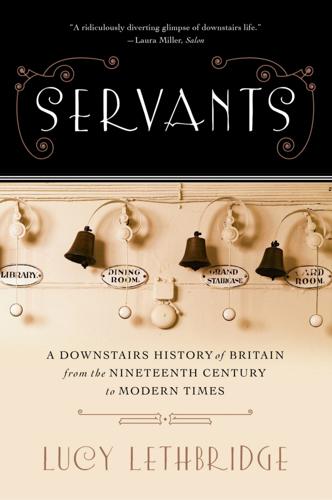
Servants: A Downstairs History of Britain From the Nineteenth Century to Modern Times
by
Lucy Lethbridge
Published 18 Nov 2013
Turner, What the Butler Saw: Two Hundred and Fifty Years of the Servant Problem, London, 1963, p. 202. PART II: THE SACRED TRUST Chapter 8: The Ideal Village 1 Banks, Campaigns of Curiosity, p. 5. 2 Quoted in Kelley, Soap and Water, pp. 7–8. 3 1906 Annual Report, Barnardo’s Archives, Barkingside. 4 Quoted in Standish Meacham, Regaining Paradise: Englishness and the Early Garden City Movement, New Haven and London, 1999, p. 30. 5 George Sturt, Change in the Village, London, 1912, p. 111. 6 Ibid., pp. 230–9. 7 E. V. Lucas, Encounters and Diversions, London, 1924, p. 8. 8 Mason, A Shaft of Sunlight, p. 20. 9 Powell, Below Stairs, p. 83. 10 Quoted in June Rose, For the Sake of the Children: Inside Dr Barnardo’s – 120 Years of Caring for Children, London, 1987, p. 44. 11 Eileen Whiteing, Anyone for Tennis?
…
G., The Condition of England, London, 1909 Masters, Brian, Great Hostesses, London, 1982 Maxstone-Graham, Ysende, The Real Mrs Miniver: Jan Struther’s Story, London, 2001 Mayhew, Henry, London Labour and the London Poor (Vols 1–4), London, 1864 McBride, Theresa, The Domestic Revolution: The Modernisation of Household Service in England and France, 1820–1920, London, 1976 McCrum, Robert, Wodehouse: A Life, London, 2004 Meacham, Standish, Regaining Paradise: Englishness and the Early Garden City Movement, New Haven and London, 1999 ———A Life Apart: The English Working Class 1890–1914, London, 1977 Menon, V. K. R., The Raj and After: Memoirs of a Bihar Civilian, New Delhi, 2000 Milburn, Clara, Mrs Milburn’s Diaries: An Englishwoman’s Day-to-Day Reflections, 1939–45, London, 1979 Miles, Mrs Eustace, The Ideal Home and its Problems, London, 1911 Mills, Ernestine, The Domestic Problem, Past, Present and Future, London, 1925 Milton, Edith, The Tiger in the Attic: Memories of the Kindertransport and Growing Up English, Chicago and London, 2005 Mitchell, David, Women on the Warpath: The Story of the Women of the First World War, London, 1965 Mitchison, Naomi, Among You Taking Notes: The Wartime Diary of Naomi Mitchison, Oxford, 1986 ———You May Well Ask: A Memoir 1920–1940, London, 1979 ———Small Talk: Memories of an Edwardian Childhood, London, 1973 Mosse, Werner E.

Where We Are: The State of Britain Now
by
Roger Scruton
Published 16 Nov 2017
The nineteenth-century cities were built either as collections of suburbs or as model industrial settlements, such as Robert Owen’s New Lanark in Scotland, and the Cadbury family’s Bourneville near Birmingham. They grew from a subconscious sense that to build is to intrude on nature, and that the intrusion must always be apologized for. As the cities expanded so too did the apology, an attitude that led at last to the ‘garden city’ movement of Sir Ebenezer Howard. That movement is alive today, one force in the great controversy over land use precipitated by our housing crisis. And it illustrates a singular fact about the British people, which is that they are unhappy if they are not living on the ground.22 However poor they are, British people will avoid high-rise apartment blocks and strive to live where they can open a door onto their piece of territory.
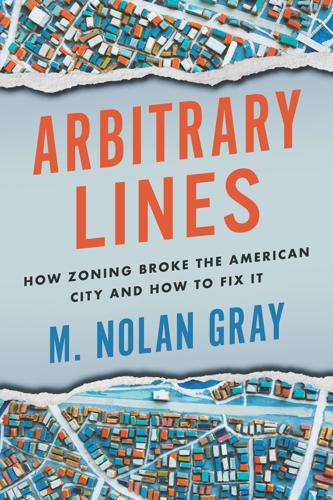
Arbitrary Lines: How Zoning Broke the American City and How to Fix It
by
M. Nolan Gray
Published 20 Jun 2022
Ambler, 13–14, 179 Federal Housing Administration (FHA), 30, 85 Federal Transportation Administration, 121–122 Ferriss, Hugh, 23 FHA (Federal Housing Administration). see Federal Housing Administration (FHA) Fifth Avenue Association, 21 fire, 15, 25, 155, 186 Fischel, Bill, 64 flat zoning, 25, 38 flooding/floodplains, 59, 143, 155, 160–161, 190 floor area ratio (FAR), 39, 54–55, 115–116 Florence, Italy, 67 Floyd, George, 79 Flyer from the 1916 St. Louis campaign to adopt racial zoning, 83 Fort Worth, 75 fourplexes, 37, 62, 111, 112, 118 France, 122 Frankfurt, 55 Galveston, 143 Ganong, Peter, 77 Garden City movement, 134 gasoline consumption, 93, 100, 103 gentrification, 171–173 Glaeser, Edward, 100–101 Glick, David M., 62 Great Depression, 53, 76–77 Great Migration, 17, 76, 80, 85 Great Society, 30 Green Metropolis, 92–93 greenhouse gas emissions, 93 Grid plan for Philadelphia, 1682, 16 Hamilton, Emily, 172 High Density Multifamily zone, 55 Hippodamus, 174 Hirt, Sonia, 25 Hollywood, 67 Holme, Thomas, 15, 16, 174 Home Insurance Building in Chicago, completed in 1885, 18 home-based businesses, 46 Homebrew Computer Club, 72 homelessness, 3, 56, 180 homevoter hypothesis, 64 homosexuals, 69 Hoover, Herbert, 13, 26–27, 29 Houses that look conspicuously like storefronts, 102 housing, demand for, 18, 52 housing affordability crisis, 52–53, 57–58, 59, 65, 74 housing costs, 52–53, 74 housing shortages, 3, 62–63 Houston, 6, 143, 146, 153, 173 Houston Code of Ordinances, 156 Hsieh, Chang-Tai, 76 Hurricane Harvey, 160–161 Illustration of how floor area ratio (FAR) rules work, 40 Illustration of the density restrictions in effect in a typical R-1 single-family housing district in 1962, 41 Illustration of the setback rules that would come to define the American suburban landscape, 98 income convergence, 77 Indianapolis, 85 industrial districts, 84 industrial interests, 24, 25, 26 industrial use, 28, 34, 42, 114, 124 Intel, 72 Irish, 80 Jacobs, Jane, 72, 154–155 Japan, 110, 122–124 Jews, 13, 21, 69, 179 Johannesburg, South Africa, 80 Kahn, Matthew, 100–101 knowledge spillovers, 68, 71–72 Kunstler, James Howard, 93 labor markets, 67, 70, 71, 75 labor relations, 20–21 land use before zoning, 14–15 land uses, 34, 42, 53, 137, 156 land-use compatibility, 135, 136–139 land-use regulation, 64, 81, 186–189, 190 legally nonconforming, 42 Lexington, 38, 59, 99–100 liquor stores and bars, 42, 156 Los Angeles, 54, 59, 67, 85, 130 low-density residential districts, 39 Low-Income Housing Tax Credit (LIHTC), 170 manufactured housing, 39, 56, 86, 117 marginalized communities, 69 market forces of supply and demand, 53–54, 184–186 Massachusetts, 53 massing, 54 maximum lot coverage, 39, 98 maximum permitted massing, 23 Maxwell, Palmer, 62 mechanisms of exclusion, 20, 30 Miami, 46–47, 59 microunits, 116 minimum lot size, 40–41, 57–58, 96, 115–116, 157 Minneapolis, 5, 79, 112 mobile homes. see manufactured housing Modest two-bedroom unit and its required parking, 60 Moretti, Enrico, 71, 76 Mount Laurel doctrine, 87 Muir, John, 95 multifamily housing, 59 multiplier effect, 73 Nashville, 4 negative externalities, 15, 132, 137, 139 Neighbors for More Neighbors, 112 New Deal, 30, 85 New Orleans, 59, 84 new work, 72 New York City 1916 zoning code, 13, 21–24 adopts grid plan for Manhattan, 174 building of new units, 53 commercial landlords, 21, 24 comprehensive density restrictions and, 19 dwelling unit factor, 41–42 and Edward Bassett, 27 and The Equitable Building, 21–22 gas consumption per resident, 93, 100 as green city, 92–93 housing shortages, 65 liberal zoning code, 22 natural skepticism of zoning, 24 originally shared common philosophy of zoning with Berkeley, 26 restrictions on apartment housing, 54 Series of illustrations depicting the maximum permitted massing pursuant to New York City’s 1916 zoning code, 23 and single-room occupancies (SROs), 56 and specific groups of unwanted immigrants, 13 Two zoning maps covering the exact same territory of New York City in 1961 and 2021 illustrating the exponential increase in complexity of zoning maps, 45 use, height, and area districts, 22 zoning and housing shortages in, 3 New York Zoning Law, 1916, 23 NIMBY (Not In My Backyard), 11–12, 190 noise, 15, 17, 128, 155, 166 nuisances. see specific nuisances by name Obama administration, 52 oil wells, 156 Oklahoma City, 93 Olmsted, Frederick Law, Jr., 27, 95 Omaha, 75 Orlando, 3, 74, 75 Owens, David, 92–93 parking requirements abolishing minimum, 114–115 for bar owners in Charlotte, 42 in commercial and industrial districts, 42 disappearance of, 5 as driver of high costs in cities, 58–59 in Lexington, KY, 59 and mandated construction of parking structures, 59 Modest two-bedroom unit and its required parking, 60 as policy to increase housing costs, 52, 57 for religious communities in Phoenix, 42 substantially reduced in San Diego and Cincinnati, 115 zoning rules and parking spaces per resident, 102–103 performance zoning, 47 permitted number of units per square feet of floor area, 41 permitting. see specific permits by name Philadelphia, 15, 16 Phoenix, 16, 42, 68, 104 Photo of New York’s Pennsylvania Station taken in 1910, 188 planned unit developments (PUDs), 46 planning after zoning Chapter 40B program, 171 community land trust (CLT) model, 172–173 desegregating the post-zoning city, 169–170 locking in equity, 171–173 Low-Income Housing Tax Credit (LIHTC), 170 noise pollution study, 166 plan for measurable outcomes, 176–178 planners as mediators, 167–169 planning for growth, 174–176 regulating nuisances, 166–167 Section 8 (Housing Choice Voucher Program), 170–171 planning commission, 35 planning vs. zoning, 6, 15, 21, 26, 191–194. see also zoning reform pollution, 13, 15, 17, 189 positive externalities, 69 Prevost, Lisa, 87 private nuisance, 15 Progressive Era, 20–21 public health and safety, 15, 42, 84 public nuisance, 15 public schools, 86, 89 Puga, Diego, 76 racial inequality, 2, 4, 13, 14, 25 Recently adopted street grid in Bastrop, Texas, 175 Reconstruction, 82 redlining, 85 reforms, American, 2, 20–21 religious communities, 42 rent-burdened, 52 residential use, 24, 28, 111 Residential zoning map of San Jose, 55 restriction of housing production, 54. see also housing affordability crisis rezoning, 44 rezoning permits, 62 Riverside, Illinois: a pioneering development that would set a model for the urban design of modern suburbia, 96 Roosevelt, Franklin, 29 Rothstein, Richard, 85 Same block of Midtown Houston, 2010 and 2020, 153 San Antonio, 70, 104 San Diego, 75 San Francisco, 3, 36, 43, 65, 75 San Jose, 54, 55, 68, 74, 75 Savannah, 42 Seattle, 75 Section 8 (Housing Choice Voucher Program), 170–171 segregation, racial, class and ethnic. see also exclusionary zoning in American cities since 1970, 86 anti-Chinese sentiment in zoning, 80 by caste in India, 15 and Chinese-owned businesses, 24–25, 82 class and use, 19, 20, 22 de facto racial zoning, 83–84 explicitly racial zoning, 80 and federally backed mortgages, 85 Fifth Avenue Association’s support of, 21 Flyer from the 1916 St.
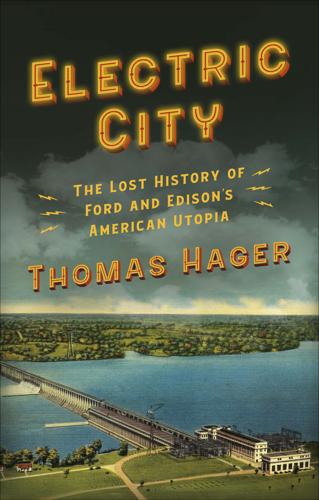
Electric City
by
Thomas Hager
Published 18 May 2021
The nation’s history was rich with experiments in creating perfect societies—some political, many religious, from socialists to Shakers. Edward Bellamy’s influential 1888 utopian novel Looking Backward had been a blockbuster bestseller, influencing many readers to think about how life might be made perfect. And Ford was not the first to think about moving people out of big cities and into small villages—a “garden city” movement to do just that had been rattling around for decades. But Ford was among the first to translate the fuzzy concepts into concrete, large-scale industrial/technological terms, with power sources and lifestyle changes matched to factory designs and living conditions. Ford’s appreciation for what cars made possible and Edison’s deep knowledge of electricity’s potential role in society made them the ideal pair to dream up this new kind of techno-utopia.
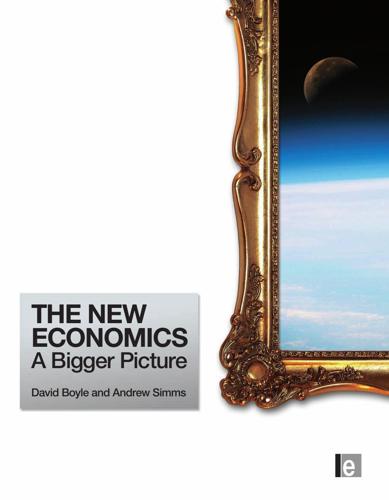
The New Economics: A Bigger Picture
by
David Boyle
and
Andrew Simms
Published 14 Jun 2009
This keeps property prices down and provides greater control over local land use. By separating the land costs from the building costs, community land trusts can reduce the cost of housing by half. They trace their roots to the cooperative land reform efforts of Robert Owen, the Chartists, John Ruskin and the garden cities movement, but the model was forgotten. nef worked with Community Finance Solutions at the University of Salford to lead research to help reintroduce community land trusts to England and Wales. nef has also developed with CDS Cooperatives a new model called Mutual Homeownership. www.communitylandtrust.org.uk Community reinvestment Banks have a moral obligation – and in the USA this is a legal obligation – to lend money in places they are prepared to accept deposits from.
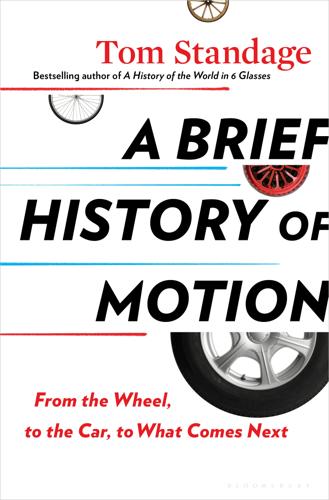
A Brief History of Motion: From the Wheel, to the Car, to What Comes Next
by
Tom Standage
Published 16 Aug 2021
Blakemore, E. “How Automobiles Helped Power the Civil Rights Movement.” Smithsonianmag.com, February 28, 2020 Bondár, M., and Székely, G. V. “A New Early Bronze Age Wagon Model From the Carpathian Basin.” World Archaeology, vol. 43, no, 4 (2011): 538–553. Buder, S. Visionaries and Planners: The Garden City Movement and the Modern Community. Oxford: Oxford University Press, 1990. Bulliet, R. W. The Camel and the Wheel. Cambridge: Harvard University Press, 1975. Bulliet, R. W. The Wheel: Inventions & Reinventions. New York: Columbia University Press, 2016. Burmeister, S. “Early Wagons in Eurasia: Disentangling an Enigmatic Innovation.”
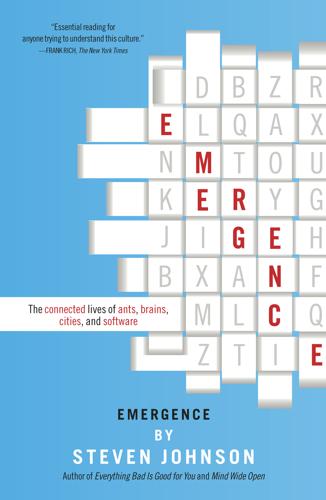
Emergence
by
Steven Johnson
In The City in History, published around the same period, Mumford had looked back at the Greek city-states, and their penchant for founding new units once the original community reached a certain size—the urban equivalent of reproducing by spores. His attachment to Ebenezer Howard also stemmed from the same lack of confidence in metropolitan self-regulation: the Garden City movement—not entirely unlike the New Urbanist movement of today—was an attempt to provide the energy and dynamism of city life in smaller doses. The Italian hill towns of the Renaissance had achieved an ideal mix of density and diversity while keeping their overall population within reasonable bounds (reined in largely by the walls that surrounded them).
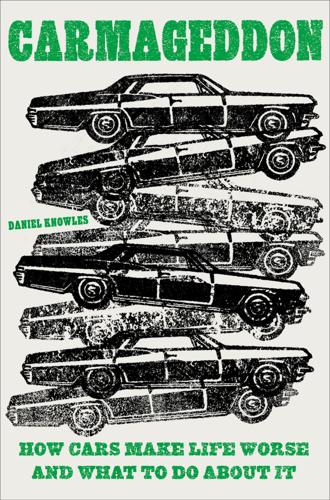
Carmageddon: How Cars Make Life Worse and What to Do About It
by
Daniel Knowles
Published 27 Mar 2023
They were polluted by industry and by millions of coal fires. The Victorian terraces we now value were overcrowded, with families packing into single rooms. Diseases such as polio and tuberculosis were still rife. And it was that urban misery that motivated the planners of the day—people like Ebenezer Howard, the father of the Garden City movement in England. Howard’s most influential writing predated the motorway age. But his ideas ended up informing it. In his utopian manifesto, Garden Cities of To-Morrow, he argued that cities should be replaced by modest towns with populations of no more than 32,000 people. They would be split between industrial, commercial, and residential areas, with “magnificent boulevards” 120 feet wide cutting between them.
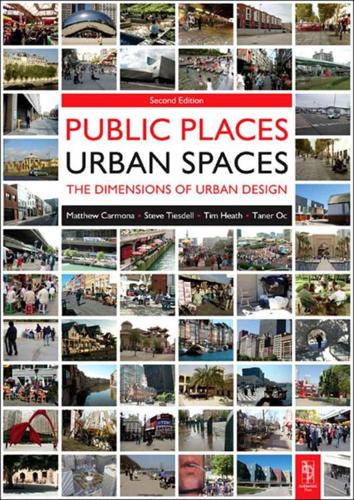
Public Places, Urban Spaces: The Dimensions of Urban Design
by
Matthew Carmona
,
Tim Heath
,
Steve Tiesdell
and
Taner Oc
Published 15 Feb 2010
TABLE 2.1 Differences Between Suburban (‘Sprawl’) and Urban (‘Compact City’) Source: Adapted from Dennis & Urry (2009: 113).Low DensityHigh Density Zoned development Mixed-use development Segregation of functions for living, working, recreation Integration of functions for living, working, recreation Segregation of demographic and economic groups Mixed-income communicates Car dependence Predominance of pedestrians and cyclists Disconnected public spaces Interconnected walkable network of large- and small-scale public spaces High-speed transport networks and increased road infrastructure Minimised need for transport and planning for walking and cycling Parking, buildings and freeways Parks, landscape and cycle paths Minimum parking spaces Parking space capping requirements Sense of anonymity Sense of community US urban model European/Asian model Developed from about 100 years ago Developed from 9000 years ago Large-scale developments Neighbourhood-human-scale developments Superstores and big shopping complexes Corner shops, local shopping areas, farmers’ markets Mass housing and commercial/industrial districts Capping of allowable space for commercial/industrial districts Driven by market forces Driven by vision and a masterplan High energy Low energy High carbon dioxide emissions Low carbon dioxide emissions The initial motivation for living in what became the suburbs was to escape the industrial city and its pollution, disease and crime. Additional attractions were better quality housing, a garden, healthier living conditions and the social status conferred. The growth of the Garden Cities movement in particular was highly influential in this period, providing an idealised suburban model that proved immediately attractive – though subsequently much abused – throughout the twentieth century (Box 2.3). Indeed, if one measured the influence of the Garden Cities movement by the extent of its direct descendent – suburban sprawl – its impact far outweighs that of Modernism. BOX 2.3 Garden Cities Originally envisaged by Ebenezer Howard and published in 1898 in Tomorrow, A Peaceful Path to Real Reform, the Garden Cities concept pursued a strong social agenda of creating socially mixed, working communities in healthy, green environments.
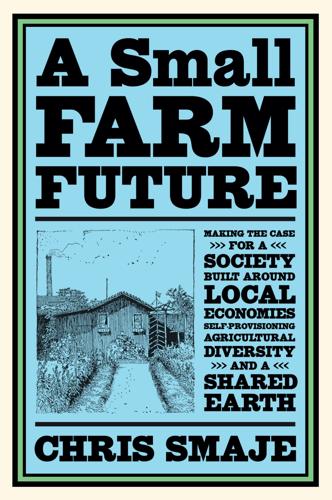
A Small Farm Future: Making the Case for a Society Built Around Local Economies, Self-Provisioning, Agricultural Diversity and a Shared Earth
by
Chris Smaje
Published 14 Aug 2020
A difficulty with this tradition is that it tends to involve ripping up the existing script and starting over again with a whole new geopolitics, which is problematic when, as in New England and in most other places, there are already people in place with other ideas. More recent urban utopias like the Garden City movement found ingenious ways around this to blend the best of the urban and the rural. But, as with back-to-the-land rural utopianism, they’ve made limited headway in the face of a capitalist geopolitics unsympathetic to dispersed and self-reliant patterns of settlement. This geopolitics has been a more powerful driver of urbanism than any rural counter-utopia, given the need for a concentrated industrial or post-industrial labour force and the prevalence of rural workers without secure access to their own land.
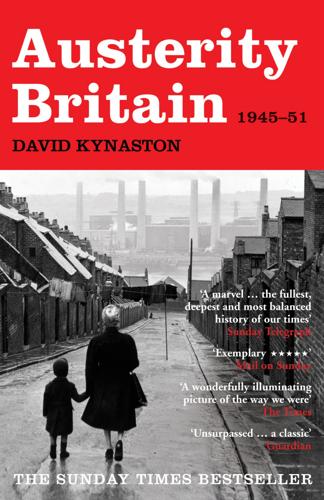
Austerity Britain: 1945-51
by
David Kynaston
Published 12 May 2008
Writing in 1942 in the Architectural Review (one of modernism’s strongholds), he gave a hostile appraisal of a clutch of publications in Faber and Faber’s ‘Rebuilding Britain’ series, masterminded by Osborn and including Osborn’s own Overture to Planning. After noting that all the publications ‘state as axiomatic truths the one-sided arguments of the Garden City Movement’, Goldfinger went on: ‘The problem before the re-planners of the country can be neatly and precisely defined by saying that it is to create a frame for human life, liberated as far as possible from the drudgery of material need. Modern technology enables this to be done. But this aim will not be furthered by the introduction of sentimentality.’
…
The other six were Corby in Northamptonshire, Newton Aycliffe and Peterlee in the north-east, East Kilbride and Glenrothes in Scotland, and Cwmbran in Wales. Developed partly to relieve the housing shortage but also with explicit brave new world ambitions, they would become emblematic of the whole 1945 settlement. The essential guiding spirit of these new towns followed on from Ebenezer Howard’s garden-city movement: they were to be economically self-contained and socially balanced communities that in national terms would stimulate decentralisation from the overcrowded big cities. Reporting in 1946 to the new Minister of Town and Country Planning, Lewis Silkin, the Reith Committee (with Osborn a prominent member) placed particular stress on the need for a strong sense of community and highlighted the potential benefits of the neighbourhood unit – which indeed was the model explicitly used in 11 out of the first 14 new towns.
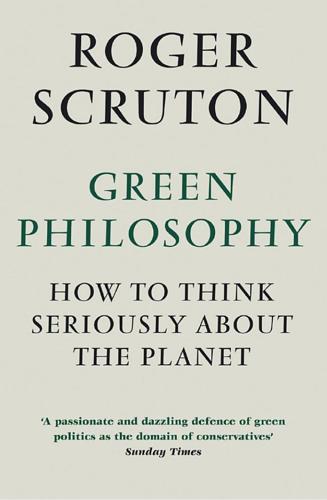
Green Philosophy: How to Think Seriously About the Planet
by
Roger Scruton
Published 30 Apr 2014
Nor has it only been in America that this aesthetic has acquired its adherents. The idea of the park as a nature reserve in the heart of the city – magnificently realized by Frederick Law Olmsted in his design for New York’s Central Park – has had a long line of European adherents, spawning the ‘garden city’ movement of Ebenezer Howard in England, and the recent ‘greening the city’ movement in Britain, Scandinavia and Germany. Kotkin’s argument has been backed up recently by Robert Bruegmann in America and Paul Barker in Britain, both defending the suburbs as chosen environments, even as places of deep settlement, in which ordinary people achieve a freedom and security that are not easily available to them elsewhere.
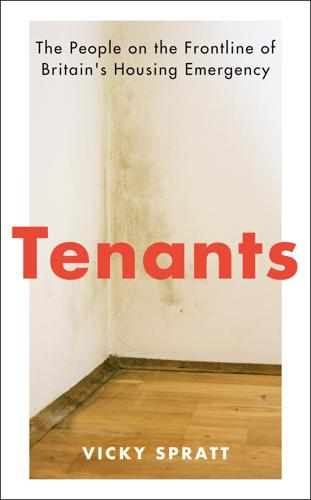
Tenants: The People on the Frontline of Britain's Housing Emergency
by
Vicky Spratt
Published 18 May 2022
Construction started in earnest on an ambitious plan for a municipal garden suburb after 1931 when Wythenshawe was redesignated as part of Manchester, and by 1945 its Baguley, Royal Oak, Benchill and Sharston neighbourhoods had an estimated combined population of 21,000. As estates like Wythenshawe developed across the country, they significantly altered the landscape of British housing; they were part of the garden city movement that was started by the urban planner Ebenezer Howard, who founded the Garden City Association in 1899. Howard saw garden cities as ‘the peaceful path to real reform’, of which Letchworth, near Hitchin in Hertfordshire, was England’s first example. Howard’s work inspired the architect and MP Sir John Tudor Walters, who, with a committee of experts, set out on behalf of the state to create a blueprint for decent, desirable housing for working-class people after the First World War.
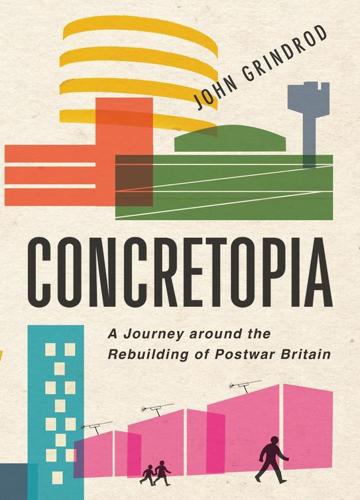
Concretopia: A Journey Around the Rebuilding of Postwar Britain
by
John Grindrod
Published 2 Nov 2013
Gibberd admitted later that there was ‘a selfish reason for the block in that, as joint author, along with F. R. S. Yorke, of The Modern Flat, this would be an opportunity to try out some of its theories. There was the special appeal that a point block would orientate the new town towards Le Corbusier’s vertical city – the “ville radieuse” – and away from the garden city movement.’17 Le Corbusier’s powerful vision of a city of parkland punctuated by mighty tower blocks as a solution to urban living had inspired and incensed architects and planners in equal measure. In Harlow even a modest nod to this idea, in the form of a ten-storey, Swedish-style, concrete-and-red-brick point block, was almost derailed by government opposition to the cost of constructing such an experimental building.

Computer: A History of the Information Machine
by
Martin Campbell-Kelly
and
Nathan Ensmenger
Published 29 Jul 2013
Another time he became obsessed with calisthenics and physical fitness and took to horse riding at six o’clock each morning—and obliged his senior executives to accompany him. He was capricious, as likely to reward a worker with whom he was pleased with a large sum of money as to sack another on the spot for a minor misdemeanor. He was a leading figure in the Garden City movement, and the NCR factory in Dayton, Ohio, was one of its showpieces, its graceful buildings nestling in a glade planted with evergreen trees. However, for all his idiosyncrasies, there is no question that Patterson possessed an instinct for organizing the cash register business, which was so successful that NCR’s “business practices and marketing methods became standard at IBM and in other office appliance firms by the 1920s.”
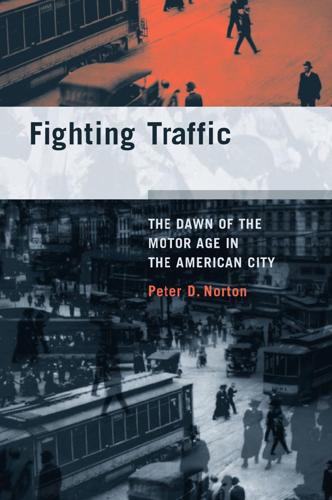
Fighting Traffic: The Dawn of the Motor Age in the American City
by
Peter D. Norton
Published 15 Jan 2008
First, traffic engineers and their sponsors wanted practical, affordable remedies for the traffic problem, the benefits of which could be realized in short order. The failure of police departments’ short-term remedies taught chambers of commerce patience, but they could not wait for the city to be rebuilt, and they could not afford to rebuild it. Academic planners, particularly those influenced by the garden city movement, proposed 132 Chapter 5 numerous plans of urban deconcentration. The American City Planning Institute traced a catalogue of urban ills to excessive urban density, and so recommended planned deconcentration. Yet for all of their proposals, city planners contributed little to the deconcentration of cities.16 In the first half of the twentieth century they did not have the means to achieve planned deconcentration.

The State and the Stork: The Population Debate and Policy Making in US History
by
Derek S. Hoff
Published 30 May 2012
Brooks, 204 Ford, Gerald, 329n5 Ford Foundation, 145, 176; support for Population Council, 125; support for Resources for the Future, 115 Foreign Assistance Act of 1963, 147, 148 Forest Service, 173 Forrester, Jay, 222, 230 Fortas, Abe, 169 France, declining fertility rate in 1970s, 235 Franklin, Benjamin, 18–20, 253n20; “Observations Concerning the Increase of Mankind,” 19–20 free labor discourse, 35 Freeman, Orville, 335n46 Free Soil Party, 38 free trade ideas, 18, 30, 33, 37, 51 French Revolution, 22 Friedman, Milton, 209, 211, 215, 231, 236 Friedman, Thomas, Hot, Flat, and Crowded, 6 frontier, closing of, 8, 11, 43, 44, 56, 58, 96, index 102, 244; metaphor for policy makers, 96. See also westward expansion frontier thesis, 44–45, 50 Fulbright, William, 147 Furedi, Frank, 241 Galbraith, John Kenneth, 95, 128, 138, 143, 156; The Affluent Society, 130–31, 223; “How Much Should a Country Consume?,” 131 Galton, Francis, 58, 59 Garden City movement, 99 Gardner, John, 149 Garrow, David J., 322n105 Gaye, Marvin, “Mercy Mercy Me (The Ecology),” 182 General Assembly of the Presbyterian Church, support for overseas population programs, 184 general equilibrium theory, 48 generation gap, 236 George, Henry: Progress and Poverty, 54; theory of land monopoly, 57 George III (king), 21 Georgescu-Roegen, Nicholas, 175, 176 Gerber, Dan, 184 Gergen, David, 213 German immigrants, 20 Germany, fertility rate, 2 Gilder, George, Wealth and Poverty, 228–29 Gillon, Steven, 162 global gag rule, 246 global population: current rate of increase, 1; doubled between 1900 and 1960, 165; from 1965 to 1970, 135; projected to year 2100, 6; quadrupled in twentieth century, 107 Godwin, William, 3; attacks on Malthus, 33; An Enquiry Concerning Political Justice, 25 Goldberg, Arthur, 141 Goldwater, Barry, 201 good neighbor foreign policy, 159 Goodrich, Carter, 102 Gordon, Linda, Woman’s Body, Woman’s Right: A Social History of Birth Control in America, 150 Gottlieb, Manuel, 121 Grant, Madison, The Passing of the Great Race, 60 Gray, Lewis, 69 365 Great Britain: “Beveridge Report,” 84; effort to restrain colonial expansion, 20; great tariff debate, 33; mixed opinion of population growth at end of nineteenth century, 48; poor laws, 26, 150; population trends from 1720 to 1770, 19; Proclamation of 1763, 20; pronatalist measures, 82 Great Depression, 64, 72, 274n17; decline in birthrate, 11.

Grand Transitions: How the Modern World Was Made
by
Vaclav Smil
Published 2 Mar 2021
Princeton, NJ: Princeton University Press. MCPE (Ministerial Conference on the Protection of Forests in Europe). 2007. State of Europe’s Forests 2007. Warsaw: MCPE. McShane, C. 1997. The Automobile: A Chronology. New York: Greenwood Press. Meacham, S. 1999. Regaining Paradise: Englishness and the Early Garden City Movement. New Haven, CT: Yale University Press. Meadows, D.J. et al. 1972. The Limits to Growth. New York: Universe Books. Mellars, P. 2006. Why did modern human populations disperse from Africa ca. 60000 years ago? A new model. Proceedings of the National Academy of Sciences 103:9381–9386. Messisbugo, C. 1549.
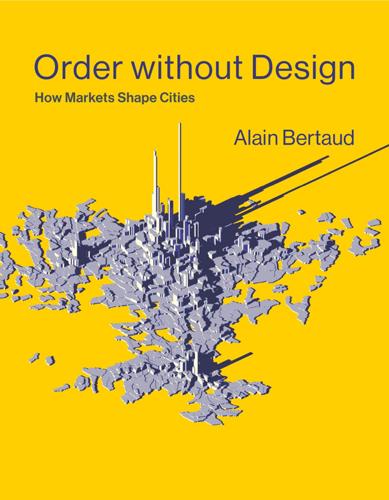
Order Without Design: How Markets Shape Cities
by
Alain Bertaud
Published 9 Nov 2018
Design is a more specific part of urban planning that involves imposing physical limits on the built environment. Design involves producing the plans of individual buildings but also drawing up zoning plans, limiting the height of buildings, separating land use, establishing urban growth boundaries, and similar activities. 2. Ebenezer Howard (1850–1928) was the founder of the garden city movement. He was a social reformer and utopian planner dedicated to improving the social conditions of workers in England in the latter part of the Industrial Revolution. His concept consisted of building clusters of self-sufficient cities of approximately 30,000 people surrounded by fields and forest and linked together by a network of railways.

An Impeccable Spy: Richard Sorge, Stalin’s Master Agent
by
Owen Matthews
Published 21 Mar 2019
She had a reputation for rudeness with the wives of Ott’s subordinates, and she looked down, not only literally, upon Japanese women.57 Helma was a year older than Sorge when they embarked on their affair in the autumn of 1934. But perhaps the most remarkable thing about Helma was that she had once been a communist, and had indeed been a member of the party.58 Her first husband, Ernst May, was a visionary architect who had studied in England under Raymond Unwin, the prophet of the garden city movement.59 He was also an enthusiastic socialist. May and Helma moved in left-wing circles in May’s native Frankfurt until their divorce in 1918. It is possible that Sorge may even have met Helma during the revolutionary fervour of 1919. Certainly they must have had many common Red friends and acquaintances from Frankfurt.
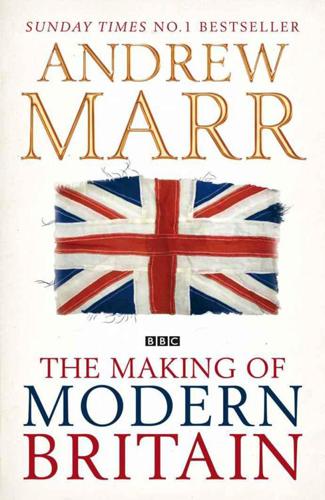
The Making of Modern Britain
by
Andrew Marr
Published 16 May 2007
There, from 1921, Welwyn Garden City began to appear: among its backers was Harmsworth’s Daily Mail, which had been sponsoring its Ideal Home Exhibition since 1908 and offered to build some cottages free of charge. There was even a Dailymail Village, though it is now dully called Meadow Green. The garden-city movement did not transform Britain, as Ebenezer Howard, sitting in his parliamentary cubicle, had once hoped. It did influence garden suburbs all over the country, however, and had a big impact on the post-1945 new-town designers. More to the immediate point, Howard and his friends were the transmission system through which ideals about semi-rural or cottagey living were passed from high-minded Victorian dreamers to the rampant speculative builders of the inter-war period who covered this country with semis.
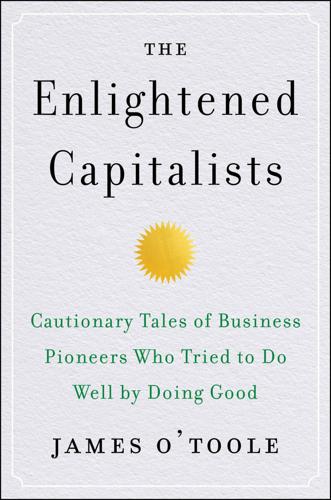
The Enlightened Capitalists
by
James O'Toole
Published 29 Dec 2018
Because most of the women in the village worked in the mills, it was difficult for them to prepare good meals for their families, so Owen opened a communal kitchen where everyone was provided with healthy food. He also established a retirement home for aged workers. Farsightedly, Owen built parks for the community, thus becoming a proto-environmentalist and town planner whose efforts to beautify the village anticipated the much later greenbelt and garden city movements in Britain and the United States. Inside the factory, Owen improved physical conditions and “extinguished government by fear” by prohibiting corporal punishment of workers and retraining their supervisors in the arts of humane disciplinary practices.27 He believed that education, moral suasion, and peer pressure were more powerful disciplinary tools than physical force.
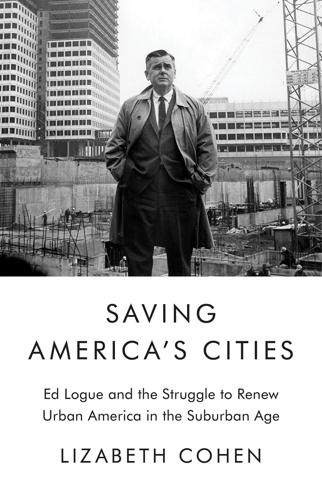
Saving America's Cities: Ed Logue and the Struggle to Renew Urban America in the Suburban Age
by
Lizabeth Cohen
Published 30 Sep 2019
I don’t have to demolish any buildings.”89 New Towns also marked another kind of break with ideas that Logue had once enthusiastically embraced: a turn away from the modernist orthodoxy of separating functions, promulgated by Le Corbusier and his followers. New Towns aimed instead to integrate living, working, schooling, shopping, and recreating all in one planned community, with each activity placed in close proximity to, not apart from, the others. New Towns historically had been rare in the United States. The British Garden City Movement of the late nineteenth and early twentieth centuries had led to only a handful of American replicas in the United States, such as Radburn, New Jersey, and Sunnyside Gardens and Forest Hills Gardens in Queens, New York. Under the auspices of the New Deal during the 1930s, a few more ambitious New Towns had emerged—Greenbelt, Maryland, and Roosevelt (originally Jersey Homesteads), New Jersey, most prominently.
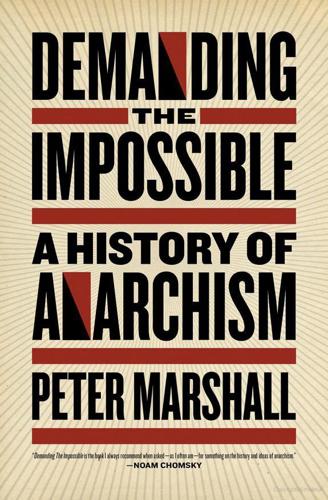
Demanding the Impossible: A History of Anarchism
by
Peter Marshall
Published 2 Jan 1992
After 1884, it has been argued that anarchist ideas in Germany virtually vanished.5 But this is too severe a judgement. A group called Die Jungen (The Young Ones) developed about 1889 inside the Social Democratic Party; members included Rudolf Rocker, Bernhard Kampffmeyer (the future founder of the German Garden City movement), and Max Baginski, who eventually became editor of the Chicagoer Arbeiter-Zeitung and one of Emma Goldman’s lovers. Their paper Der Sozialist turned expressly anarchist after Gustav Landauer became one of its editors. Syndicalism also gained a foothold when a group calling themselves Localists formed a parallel grouping around 1892 within the Social Democratic trade unions and formed their own federation in 1897 called the Frei Vereinigung Deutscher Gewerkschaften.

The Rough Guide to South America on a Budget (Travel Guide eBook)
by
Rough Guides
Published 1 Jan 2019
Opposite MASP make sure you take a stroll along the trails of the eminently peaceful Parque Siqueira Campos, pure Atlantic forest landscaped by Roberto Burle Marx. Separated from Bixiga by Avenida Paulista is Jardins, one of São Paulo’s most expensive and fashionable neighbourhoods, modelled in 1915 according to the principles of the British Garden City movement, with cool, leafy streets leading down the hill. Actually a compendium of three smaller neighbourhoods – Jardim America, Jardim Europa and Jardim Paulista – it’s home to swanky villas, top-end restaurants and bars. Have a walk on and around Rua Oscar and Rua Augusta, with their expensive shops and boutiques.